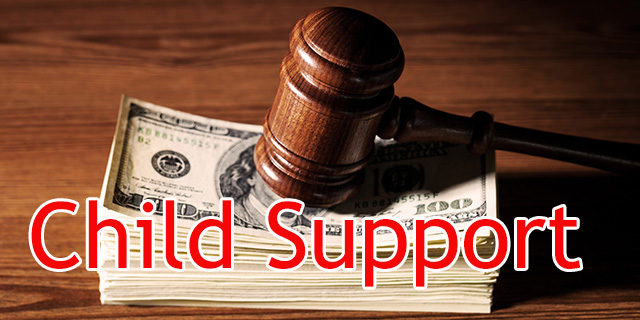As we navigate through 2025, child support laws are evolving to better reflect modern family dynamics, economic realities, and the unique needs of children. Whether you’re a custodial parent seeking fair support or a non-custodial parent adjusting to new obligations, understanding these updates is crucial. This article breaks down the key federal and state-level changes, helping you stay informed and prepared. From enhanced enforcement tools to adjustments for shared parenting, these reforms aim to make the system more equitable and efficient.
Federal Child Support Reforms in 2025
At the national level, 2025 has brought significant strides in child support enforcement and family support programs. These changes stem from recent legislation designed to streamline processes, reduce administrative burdens, and ensure more funds reach families in need.
Supporting America’s Children and Families Act: A Major Overhaul
Signed into law on January 5, 2025, the Supporting America’s Children and Families Act (H.R. 9076) reauthorizes key child welfare programs for five years, marking the first comprehensive update in over 15 years. For child support specifically, it modernizes the Child Support Enforcement (CSE) program, which serves 13 million families annually and collected nearly $30 billion in 2023. Key reforms include formally authorizing states to use private contractors for enforcement tasks and granting tribes full access to federal databases for their CSE operations. These steps are projected to save $777 million, allowing for better accountability and reduced trauma in child welfare cases. Additionally, the act cuts paperwork by at least 15% for state agencies, freeing up resources to focus on family preservation and evidence-based services like substance use support for parents.
Unborn Child Support Act: Prenatal Support on the Horizon
Introduced on February 6, 2025, the Unborn Child Support Act (H.R. 1104) seeks to expand child support obligations to cover pregnancy-related expenses, such as medical visits and prenatal vitamins. If enacted, states would enforce these from the first month of conception, with retroactive collections possible post-birth. However, as of mid-2025, the bill remains in the House Ways and Means Committee, with no passage yet. This pending legislation highlights a growing push for prenatal equity, potentially benefiting low-income expectant mothers.
State-Specific Child Support Updates in 2025
While federal changes set the baseline, states are tailoring guidelines to local needs. Here’s a look at notable updates in several key areas, focusing on calculation methods, low-income protections, and parenting time considerations.
New York: Adjusted Income Thresholds for Fairer Calculations
Effective March 1, 2025, New York updated its child support forms to account for inflation-driven increases. The Self-Support Reserve rose from $20,331 to $21,128, ensuring non-custodial parents aren’t pushed into poverty by obligations. Similarly, the federal Poverty Level Income for a single person climbed to $15,650 from $15,060. These tweaks apply to both contested and uncontested divorce forms, promoting more accurate and compassionate support determinations.
California: Equity-Focused Reforms Under SB 343
California’s Senate Bill 343, implemented in phases through 2025, introduces a revamped “K factor” formula for calculating support based on each parent’s full financial picture. Highlights include suspending obligations for incarcerated parents until 10 months post-release, reducing payments for those earning under $2,773 monthly, and mandating periodic reviews for income or health changes. Add-on expenses like medical and childcare are now shared proportionally by income, not equally, directing more funds to low-income families.
Michigan: Streamlined Formula with Extended Childcare Support
Michigan’s Child Support Formula (MCSF) updated on January 1, 2025, clarifies deviations from standard calculations, giving judges flexibility for cases like seasonal workers. Childcare expenses now extend to the end of the month when a child turns 13 (up from 12), and the ordinary medical expense threshold dropped to $200 per child annually. These changes aim to align support with real-life costs without overcomplicating the process.
New Hampshire: Equal Parenting Time Gets a Fairer Shake
An act signed by Governor Chris Sununu on July 3, 2024, took full effect in 2025, reshaping calculations for parents with equal shared custody. Previously rigid formulas often disadvantaged balanced arrangements; now, support reflects true time-sharing and income disparities, reducing disputes and promoting co-parenting stability.
How These 2025 Changes Impact Families
These updates signal a shift toward flexibility and fairness. Gig economy workers and low-income parents benefit from income instability accommodations and debt forgiveness pilots in select states. Incarcerated individuals face less punitive arrears buildup, while prenatal support proposals could ease early family burdens. However, implementation varies—consult a local attorney to apply these to your situation. Overall, expect more reviews every three years and tech-driven enforcement, like faster wage garnishments with job-loss grace periods.
Frequently Asked Questions (FAQs)
What are the biggest federal changes to child support in 2025?
The Supporting America’s Children and Families Act streamlines enforcement with contractors and tribal access, saving millions for families. The Unborn Child Support Act, still pending, could add prenatal obligations.
How do 2025 updates affect low-income parents?
Many states, like California, now reduce or suspend payments below certain thresholds and prioritize pass-through funds over state retention, helping families keep more support.
Will these changes apply retroactively to existing orders?
Most don’t; updates typically affect new or reviewed orders. Michigan and California encourage periodic reviews for adjustments.
How can shared custody parents benefit in 2025?
New Hampshire’s formula now better accounts for equal time, and proportional expense sharing in places like California reduces one-sided burdens.
Where can I find my state’s 2025 child support guidelines?
Check your state’s child support agency website or tools like New York’s updated calculators for the latest charts and forms.
